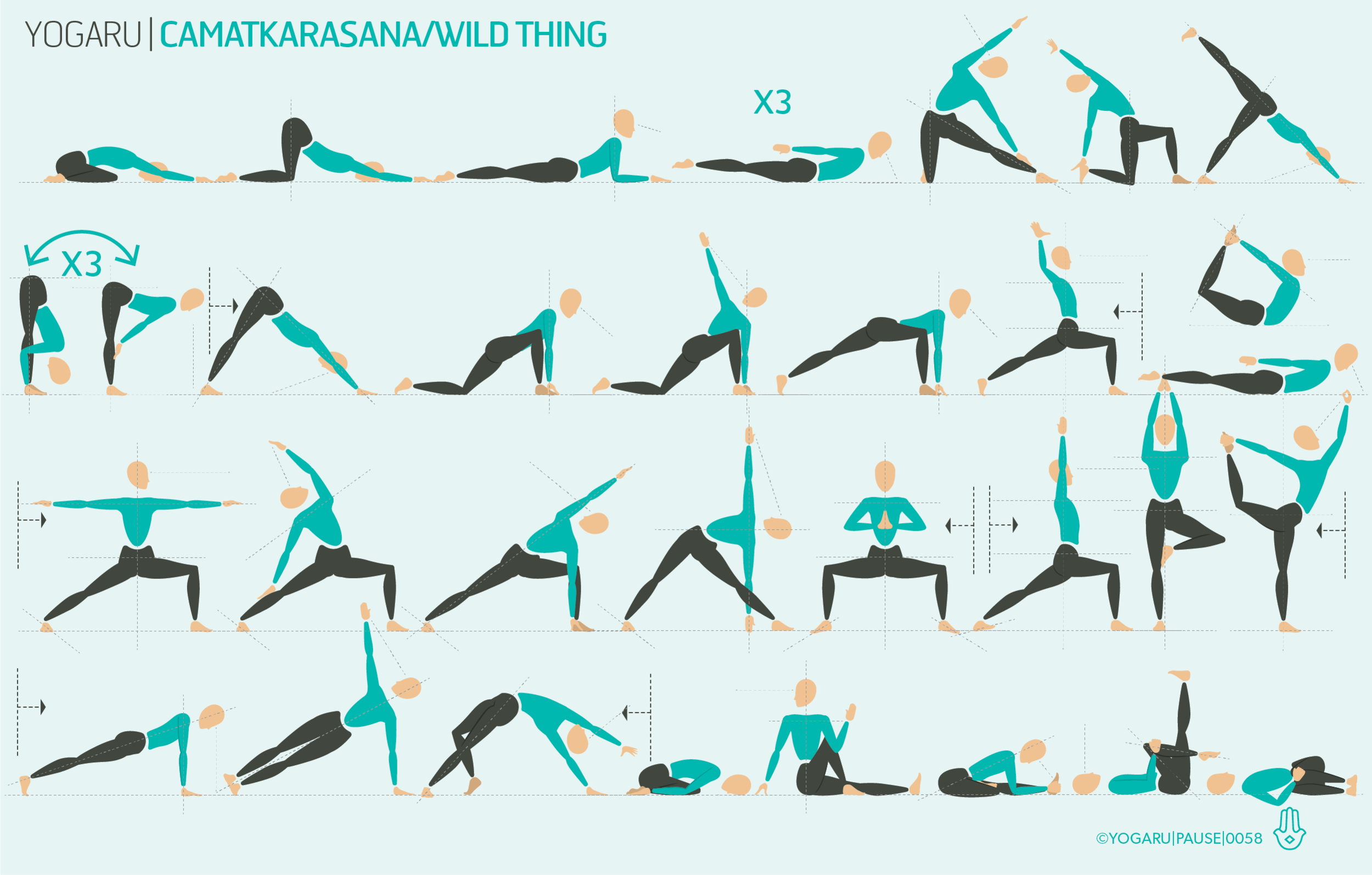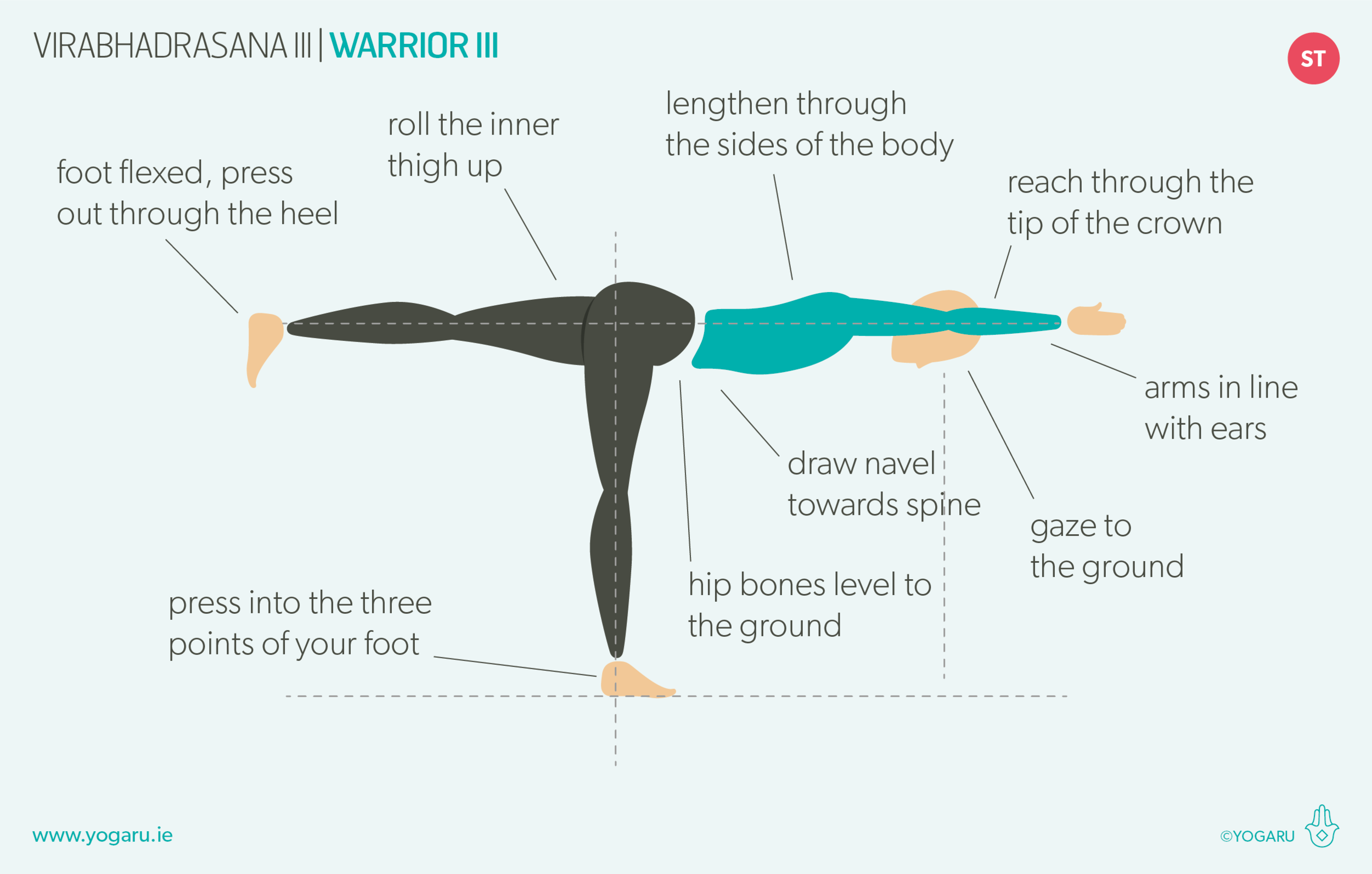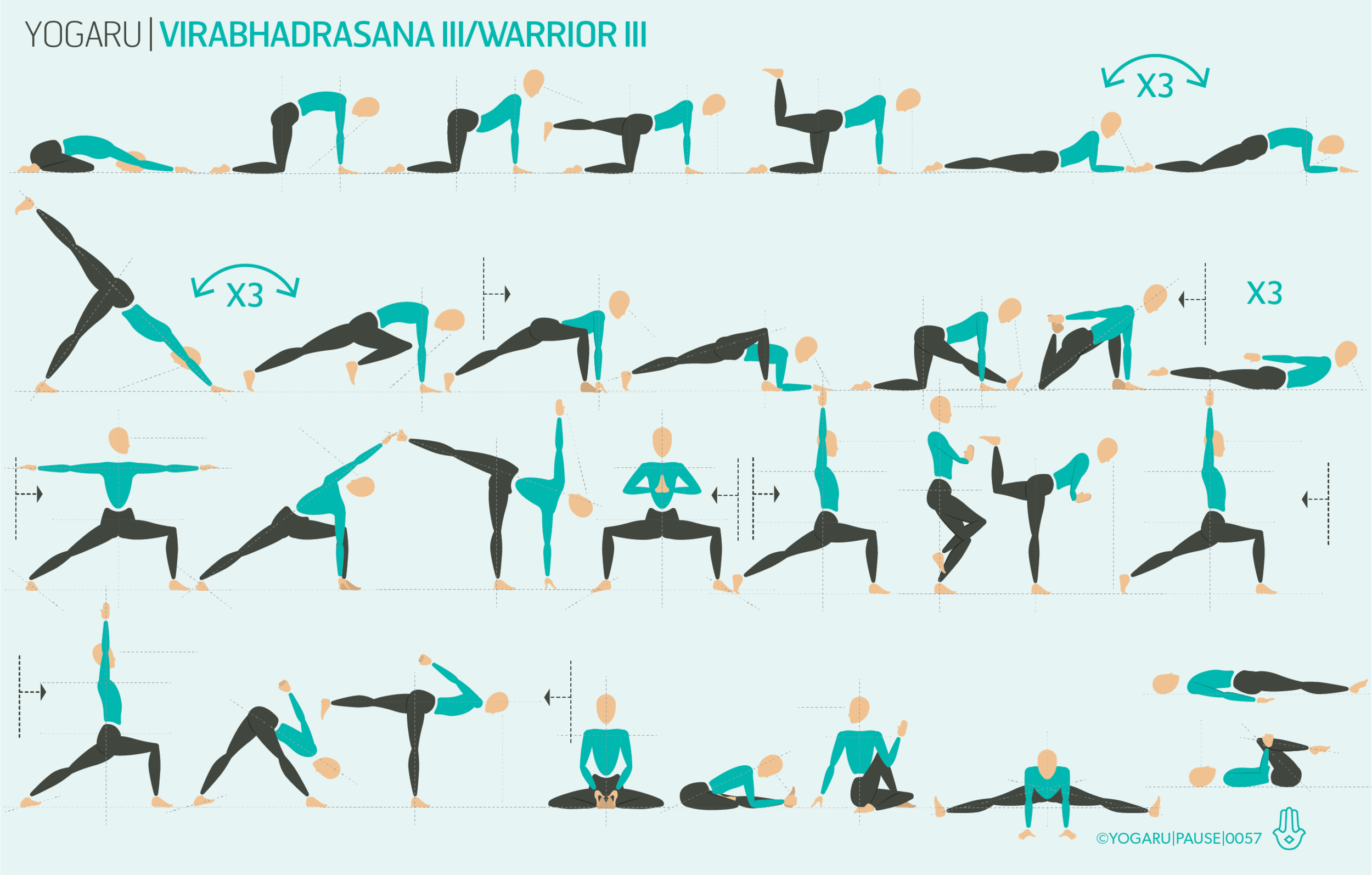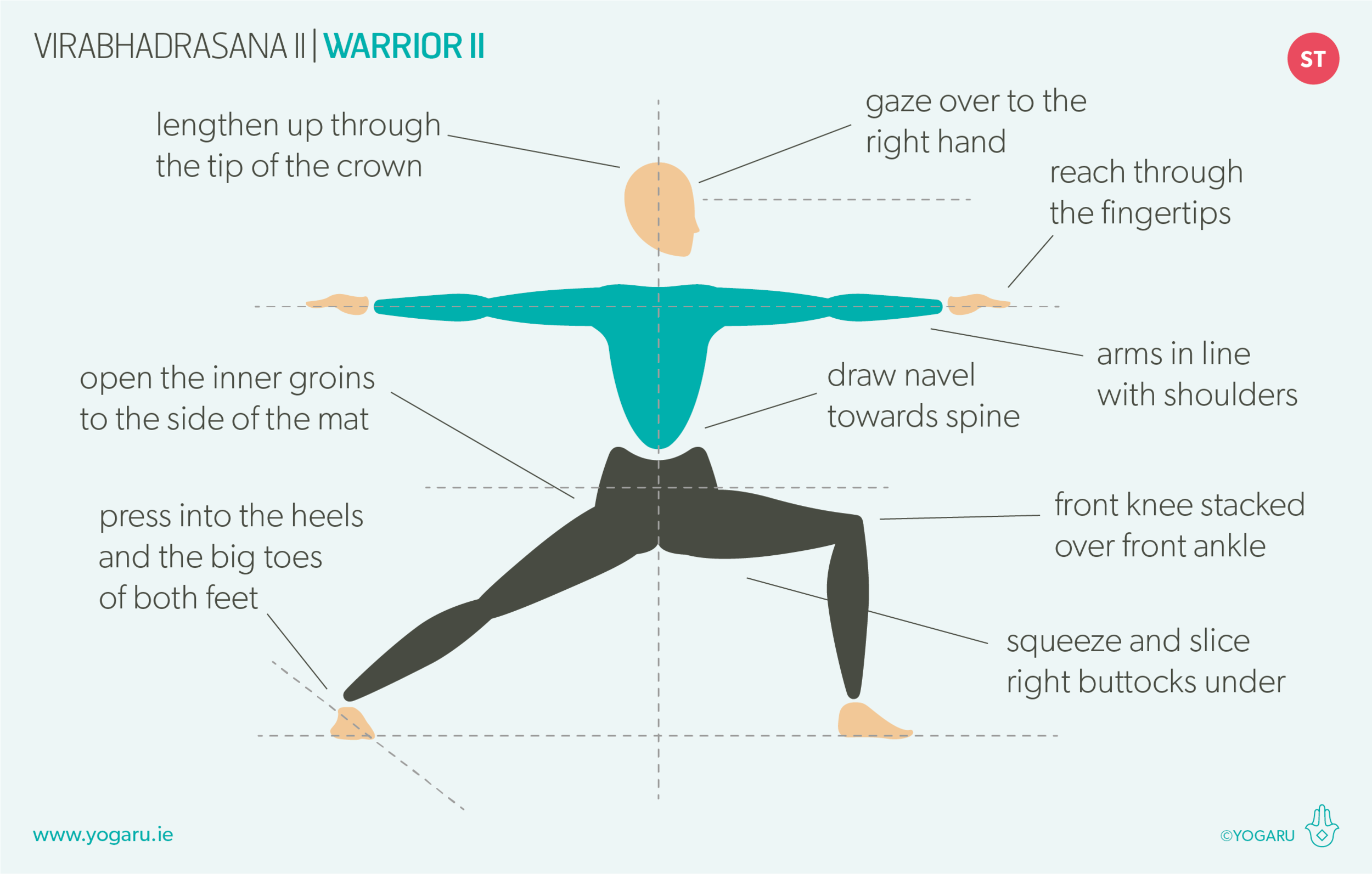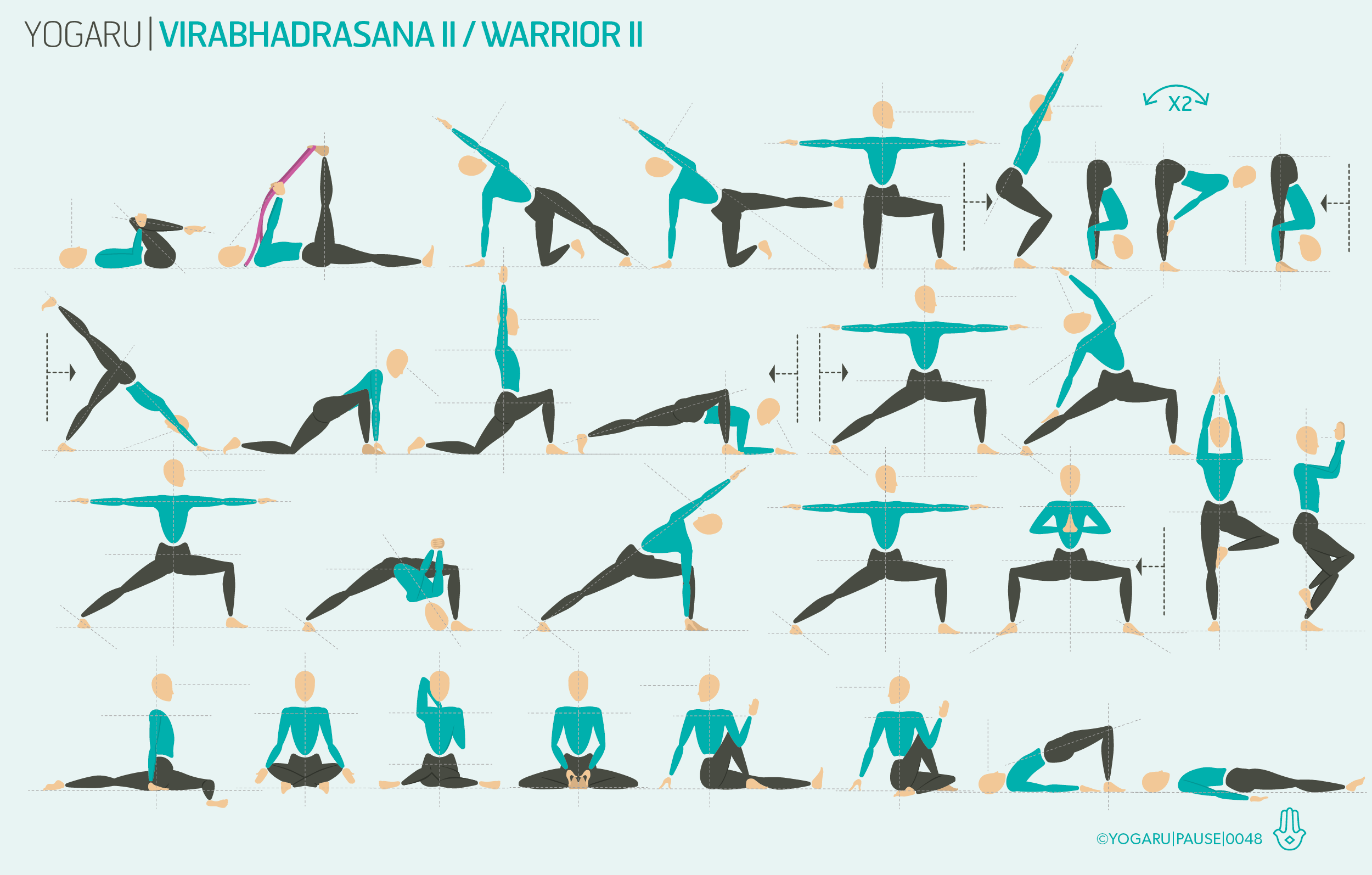WHAT'S YOUR HAPPY POSE
Last week I delved deep into Virabhadrasana III/Warrior III and found peace with my limitations, and with all the complicated anatomical nuances of the pose. This week I feel justified to pick one of my happy poses and build a whole sequence around it. Camatkarasana/Wild Thing is the ultimate heart opening pose. The pose grows from your toes grounding down; radiates through a beautiful full body arch; manifests into the pinnacle of the pose – your heart centre; and continues down through the tip of your crown and your fingertips. With all that happening it definitely deserves the title of one of my happy pose. When teaching this sequence I noticed such happy elated vibes in the class when we all came out of the pose – which is often not the most elegant transition!
THE BENEFITS OF CAMATKARASANA/WILD THING
From an anatomical point of view it opens the chest, relieves shoulder tension and encourages full body core activation to lift your hips up. We all carry tension in our shoulders, spend most of our day with our upper back curled, and our hips flexed in a seated position – opening up into Camatkarasana/Wild Thing, savouring the stretch across the chest, shoulders and hips feels like heaven. As a backbend it is energising, aids digestion, eases stress, anxiety, tension, and boosts the immune system. When you arch from your toes to the tip of your crown you are in a full body backbend, your heart is above your head which takes you into an unexpected inversion too with all its additional benefits.
EXPLORING CAMATKARASANA/WILD THING IN YOUR PRACTICE
When coming into the pose try not to spend too much time in Vasisthasana/Side Plank. They are both arm balancing poses and, although a strong joint, the wrist can fatigue very quickly. Follow the arch of the pose all the way from your toes, through your strong legs, your hips, your chest opening, and descend into the tip of your crown and your fingertips. Be aware of all your limbs and include them into the pose. Try to come out of the pose as consciously as you entered into it. Exhale and draw your navel towards your spine, curl in on yourself and gently flip back to Vasisthasana/Side Plank. It can be nice to take a few breathes in Downward Dog to take a bit of weight out of the wrists before you transfer over to the second side.
ALIGNMENT CUES
The above sequence will melt tight chests, warm up your spine and stretch your hip flexors in preparation for an invigorating Camatkarasana/Wild Thing.
Print out the below tips, along with the sequence, and enjoy the happy pose:
From Vasisthasana, step your left foot behind your right leg with a bent knee.
Ground into your right foot to lift your hips up and arch your upper back.
Rotate your left palm to face the front of the mat, sweep your arm up and over your ear.
Arch through your whole back, lengthen your neck and softly reach your head back.
Expand through the collarbones to open through your heart centre, gaze up.
To save the images for personal use click and hold down the image until the ‘save image’ option appears; on Mac hold down ‘control’ and click the image to get the option box; on PC right click on the image to get the option box. Scroll down in the ‘option box’ and click ‘save image’.
Ruth Delahunty Yogaru



